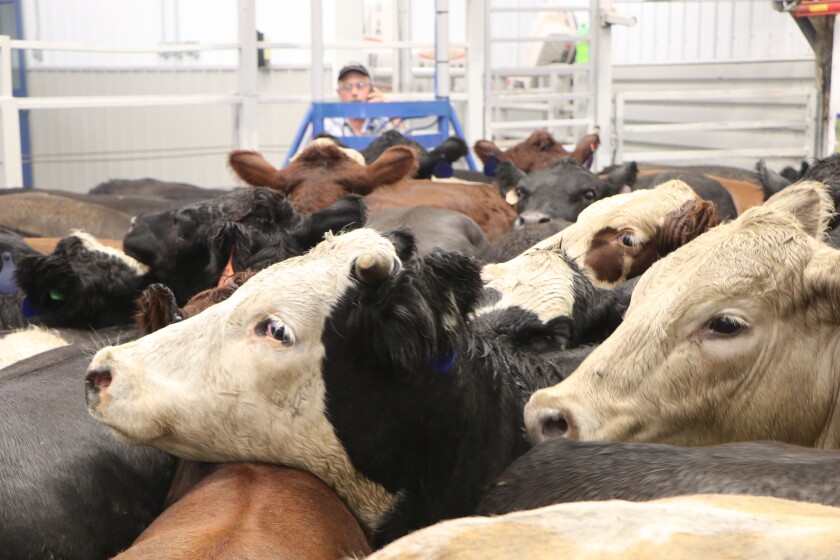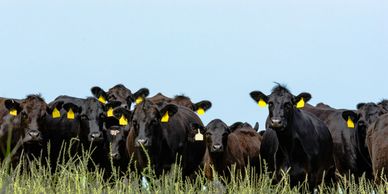Unlocking Growth Potential: Bagley Risk Management Approaches
Unlocking Growth Potential: Bagley Risk Management Approaches
Blog Article
Secret Aspects to Consider When Choosing Livestock Risk Security (LRP) Insurance Policy
When reviewing choices for Animals Risk Defense (LRP) insurance, numerous key aspects warrant cautious consideration to guarantee reliable risk administration in the farming industry. Picking the right protection alternatives tailored to your certain animals operation is critical, as is recognizing how superior expenses associate with the level of security used.
Insurance Coverage Options
When thinking about Livestock Threat Defense (LRP) insurance, it is vital to recognize the various coverage choices offered to minimize threats in the agricultural sector. Livestock Danger Security (LRP) insurance coverage supplies various insurance coverage options tailored to meet the diverse needs of livestock producers. Bagley Risk Management. One of the primary protection choices is cost protection, which secures versus a decrease in market value. Manufacturers can select the protection level that lines up with their price risk administration objectives, enabling them to secure their procedures against potential monetary losses.
An additional crucial insurance coverage option is the recommendation duration, which figures out the length of time the insurance coverage holds. Producers can pick the recommendation period that ideal fits their production cycle and market problems. Additionally, insurance coverage levels and rates differ based on the kind of livestock being guaranteed, providing manufacturers the versatility to customize their insurance policy prepares according to their details demands.
Understanding the various coverage alternatives available under Animals Risk Security (LRP) insurance is critical for producers to make enlightened decisions that successfully protect their animals operations from market unpredictabilities.
Costs Expenses

Livestock Danger Security (LRP) insurance coverage gives essential coverage choices tailored to alleviate dangers in the farming field, with a substantial facet to consider being the calculation and structure of premium costs. When identifying premium costs for LRP insurance coverage, a number of elements enter into play. These include the type and number of livestock being insured, the coverage degree picked, the existing market value, historic cost data, and the length of the coverage period. Insurers may additionally take into consideration the area of the ranch, as geographic factors can impact the total threat account.
Premium costs for LRP insurance policy are commonly determined based on actuarial information and risk analysis designs. Insurers examine historical information on livestock rates and production prices to identify an appropriate costs that reflects the degree of threat included. It is essential for animals manufacturers to meticulously assess premium prices and coverage alternatives to ensure they are effectively safeguarded versus potential monetary losses as a result of unfavorable market problems or unforeseen events. By recognizing how superior prices are calculated and structured, producers can make enlightened choices when choosing the ideal LRP insurance plan for their operation.
Qualified Animals
The determination of eligible livestock for Livestock Risk Protection (LRP) insurance coverage involves careful consideration of specific criteria and characteristics. Livestock types that are usually eligible for LRP insurance coverage include feeder cattle, fed lambs, swine, and livestock. These animals need to satisfy specific credentials associated with weight arrays, age, and meant usage. In addition, the qualification of livestock may vary based on the details insurance policy copyright and the regards to the plan.
Feeder livestock, for instance, are commonly qualified for LRP coverage if they drop within specified weight arrays. Fed livestock may likewise be eligible, yet they should meet specific weight and quality grade needs. Swine eligible for coverage generally include market weight pets meant for massacre. Lambs are one more group of livestock that can be taken into consideration for LRP insurance coverage, with variables such as weight and age playing a critical function in establishing their eligibility.
Prior to picking LRP insurance for animals, manufacturers should very carefully assess the eligibility requirements detailed by the insurance policy company to guarantee their pets meet the needed needs for coverage.
Plan Flexibility
Policy versatility in Animals Threat Protection (LRP) insurance coverage permits producers to tailor protection to match their details needs and risk administration methods. This versatility encourages animals manufacturers to customize their insurance policies based on aspects such as the sort of animals they have, market problems, and private danger tolerance levels. One essential facet of plan adaptability in LRP insurance policy is the capacity to choose insurance coverage degrees that straighten with the manufacturer's economic objectives and run the risk of exposure. Producers can choose protection levels that protect them against potential losses because of fluctuations in animals rates, guaranteeing they are properly guaranteed without overpaying for unnecessary insurance coverage. Additionally, LRP insurance supplies versatility in plan duration, allowing manufacturers to you could try here pick protection periods that finest fit their manufacturing cycles and marketing timelines. By supplying personalized alternatives, LRP insurance coverage enables manufacturers to effectively manage their threat exposure while protecting their animals operations versus unanticipated market volatility.
Insurance Claims Refine
Upon experiencing a loss or damage, manufacturers can start the cases process for their Livestock Threat Protection (LRP) insurance by immediately calling their insurance supplier. It is essential for producers to report the loss immediately to quicken the claims process. When connecting to the insurance policy Full Report service provider, manufacturers will certainly require to offer thorough information concerning the event, including the day, nature of the loss, and any appropriate documents such as veterinary documents or market rates.

After the assessment is full, the insurance coverage service provider will certainly make a decision relating to the claim and connect the outcome to the manufacturer. If the claim is authorized, the manufacturer will get settlement according to the terms of their Animals Threat Security (LRP) insurance plan. Bagley Risk Management. It is essential for manufacturers to be acquainted with the insurance claims procedure to ensure a smooth experience in case of a loss

Final Thought
Finally, when picking Animals Danger Security (LRP) insurance coverage, it is necessary to take into consideration insurance coverage choices, premium expenses, eligible livestock, policy flexibility, and the claims procedure. These vital variables will certainly assist guarantee that farmers and breeders are properly safeguarded against possible threats and losses connected with their livestock operations. Making an educated choice based on these considerations can inevitably bring about much better financial security and assurance for animals producers.
Animals Danger Protection (LRP) insurance supplies various coverage options customized to meet the varied requirements of livestock producers.The resolution of eligible animals for Animals Danger Protection (LRP) insurance policy coverage entails cautious consideration of details standards and qualities.Plan versatility in Livestock Danger Protection (LRP) insurance policy enables manufacturers to tailor insurance coverage to fit their specific requirements and risk administration strategies.Upon experiencing a loss or Home Page damage, manufacturers can initiate the cases process for their Livestock Threat Protection (LRP) insurance coverage by promptly calling their insurance policy company.In conclusion, when picking Livestock Threat Security (LRP) insurance policy, it is important to think about insurance coverage options, premium expenses, qualified animals, policy versatility, and the cases procedure.
Report this page